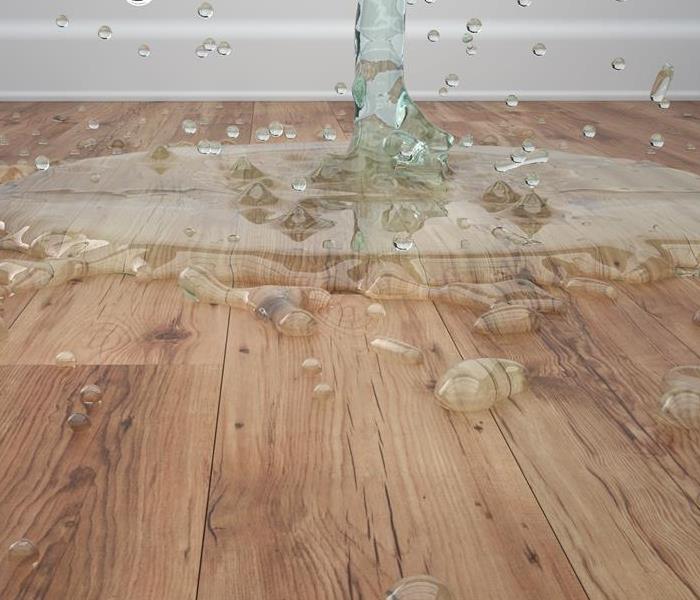Wood Floors and Old Pipes: What Could Go Wrong?
9/17/2018 (Permalink)
A natural wood floor is a beautiful thing, and it can elevate the style of your business or property. However, wood floors can also present a slight financial risk in the event of a pipe burst or a prolonged wet floor. In the event of either of these situations, there are steps you can take to salvage your floors.
1. Dry the Space
The first thing that you want to do when your floors are exposed to water is to dry them as quickly as possible. Depending on how long the floors were wet, it can take several days for them to dry. You can use dehumidifiers and fans to help speed up the process.
2. Remove Swollen and Stained Boards
You will want to remove any swollen or severely stained boards. To do this, use a circular saw to cut along the inside groove and a pry bar to pry up the damaged plank.
3. Replace Removed Boards
Replacing boards after a pipe burst can seem like a daunting task, especially if they’re tongue and groove. However, all you need to do is remove the tongue portion of the board, and it should fit into place.
4. Sand and Restain
Once all of the damaged boards have been removed and replaced with new boards, it is time to sand and restain. It is a good idea to sand and restain all of the floors on the same level, as it can be difficult to match stains.
5. Get Help
Depending on the size of your business or property, restoring your floors can be an exhausting and labor-intensive job. You may find it more beneficial to search the Newton, PA, area for local
restoration specialists who have experience in this type of damage.
Wood floors add tremendous aesthetic value to your business, but they can come with some risks, especially in the event of a pipe burst. However, by following the steps above or by seeking help, restoration is not only possible but also manageable.
For more on Newton click here.




 24/7 Emergency Service
24/7 Emergency Service
